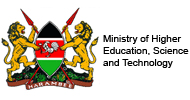Sub-Saharan Africa represents only 0.8% of the world’s researchers
The greatest number of African researchers are found north of the Sahara. In Tunisia, the number per million population even reportedly increased by 50% between 2002 and 2006, from 1030 to 1588. This compares with 170 for Algeria (2005), 647 for Morocco (2006) and 617 for Egypt (2007).
In sub-Saharan Africa, the number of researchers rose from 45,000 to 60,000 between 2002 and 2007. Although the sub-continent’s world share remained stable at 0.8%, the density of researchers increased from 67 to 79 per million inhabitants. The world average was 1081 in 2007.
In South Africa, the number of researchers per million population rose from 311 to 393 between 2001 and 2007. This was lower than the figure (in 2007) for the other emerging economies of Brazil (657) and China (1071) but higher than the figure for India (137 in 2005).
The most recent figures available for other countries South of the Sahara are the following: 132 researchers per million population for Cape Verde (2002), 66 for Côte d’Ivoire (2005), 21 for Ethiopia (2007), 10 for Lesotho (2004), 50 for Madagascar (2007), 42 for Mali (2006), 16 for Mozambique (2006), 276 for Senegal (2007), 157 for the Seychelles (2009) and 34 for Togo (2007).
Worldwide, trends are the following: In 2007, China, the European Union and the USA each represented about 20% of the world stock of researchers.
The share of the stock of researchers grew from 30% to 38% in the developing world between 2002 and 2007, with China being responsible for two-thirds of this growth.
Extracted from the UNESCO 2010 Science Report






